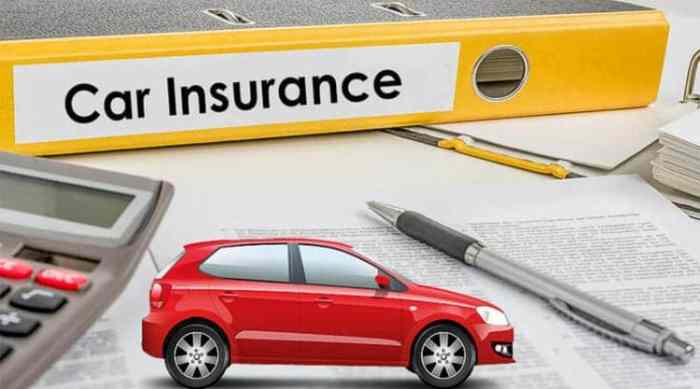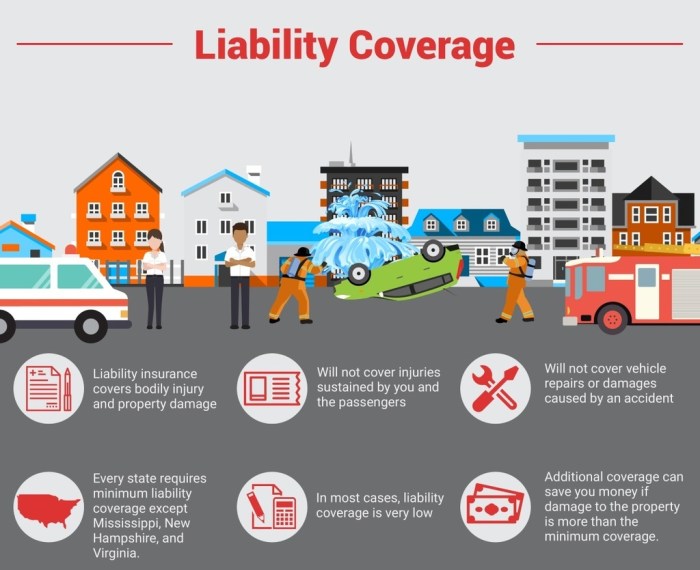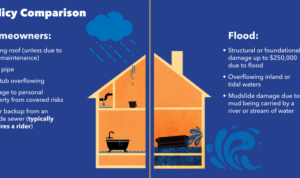Diving into the world of car insurance policies, buckle up as we navigate through the different types of coverage and factors that affect premiums. From liability to comprehensive, collision, and more, get ready to rev up your knowledge on all things car insurance!
As we steer through the intricacies of policy coverage and claims handling, fasten your seatbelts for a ride filled with insights and tips to help you navigate the insurance landscape with ease.
Types of Car Insurance Policies

When it comes to car insurance, there are several types of policies available in the market. Each type offers different coverage and benefits, catering to the diverse needs of drivers. Let’s explore the main types of car insurance policies to help you understand your options better.
Liability Insurance
Liability insurance is mandatory in most states and covers damages to another person’s property or injuries in an accident where you are at fault. This type of policy does not cover your own vehicle but helps protect you financially in case of a lawsuit.
Comprehensive Coverage
Comprehensive coverage provides protection for damages to your vehicle that are not related to a collision, such as theft, vandalism, or natural disasters. This type of policy is optional but can be beneficial for drivers with newer or valuable cars.
Collision Insurance
Collision insurance covers damages to your vehicle in case of a collision with another vehicle or object. This policy helps repair or replace your car, regardless of fault in the accident. It is recommended for drivers with newer vehicles or those leasing their cars.
Uninsured/Underinsured Motorist Coverage
This type of policy protects you in case you are involved in an accident with a driver who does not have insurance or does not have enough coverage to pay for your damages. It can also cover medical expenses for you and your passengers.
Personal Injury Protection (PIP)
Personal Injury Protection provides coverage for medical expenses and lost wages for you and your passengers, regardless of fault in an accident. It is mandatory in some states and can be beneficial for covering immediate medical needs after an accident.
Rental Reimbursement
Rental reimbursement insurance helps cover the cost of a rental car while your vehicle is being repaired after an accident. This type of policy can provide convenience and peace of mind during the repair process.
Gap Insurance
Gap insurance covers the difference between what you owe on your car loan and the actual cash value of your vehicle in case of a total loss. This policy is recommended for drivers who owe more on their car than its current market value.
Factors Affecting Car Insurance Premiums

When it comes to car insurance premiums, there are several factors that can influence the cost of coverage. Understanding these factors can help policyholders make informed decisions and potentially lower their premiums.
Age:
Younger drivers, especially teenagers, tend to face higher insurance premiums due to their lack of driving experience and higher likelihood of being involved in accidents. On the other hand, older drivers may also face higher premiums due to potential health issues affecting their driving abilities.
Driving History:
A clean driving record with no accidents or traffic violations can lead to lower insurance premiums, as it demonstrates responsible driving behavior. Conversely, a history of accidents or tickets can result in higher premiums as it indicates a higher risk of future claims.
Location:
The location where a driver lives plays a significant role in determining insurance premiums. Urban areas with higher rates of accidents and thefts typically have higher premiums compared to rural areas with lower crime rates.
Vehicle Make and Model:
The make and model of the vehicle being insured also impact insurance premiums. Expensive cars, luxury vehicles, and sports cars are more costly to insure due to higher repair costs and increased likelihood of theft.
Tips to Lower Premiums:
– Maintain a clean driving record by avoiding accidents and traffic violations.
– Consider taking a defensive driving course to demonstrate safe driving skills.
– Increase deductibles to lower premiums, but be prepared to pay more out of pocket in case of a claim.
– Bundle auto insurance with other policies, such as homeowners or renters insurance, to potentially qualify for discounts.
Insights on Premium Calculation:
Insurance companies use a combination of these factors, along with other variables, to calculate premiums. By assessing the level of risk associated with each policyholder, insurers determine the appropriate premium amount to charge for coverage.
Understanding Policy Coverage
When it comes to car insurance policies, understanding the coverage is crucial to ensure you are adequately protected in case of an accident or other unforeseen events. Let’s break down the components of a car insurance policy and discuss what is typically covered, what may require additional coverage, common exclusions or limitations, and the importance of reading the fine print to understand the details.
Components of a Car Insurance Policy
- Liability Coverage: Covers costs associated with bodily injury and property damage to others in an accident where you are at fault.
- Collision Coverage: Helps pay for repairs or replacement of your vehicle if it is damaged in a collision.
- Comprehensive Coverage: Protects your vehicle from non-collision incidents such as theft, vandalism, or natural disasters.
- Uninsured/Underinsured Motorist Coverage: Covers expenses if you are in an accident with a driver who does not have insurance or enough insurance to cover damages.
Additional Coverage Needs, Car insurance policies
- Rental Car Reimbursement: Pays for a rental car while your vehicle is being repaired after an accident.
- Roadside Assistance: Provides help if your car breaks down or you need a tow.
- GAP Insurance: Covers the difference between the actual cash value of your car and what you owe on a loan or lease if your car is totaled.
Common Exclusions and Limitations
- Intentional Damage: Deliberate damage caused by the policyholder is typically not covered.
- Racing: Accidents that occur while racing or participating in illegal activities are usually excluded.
- Wear and Tear: Normal wear and tear on your vehicle is not covered by car insurance.
Importance of Reading the Fine Print
It is essential to read the policy fine print to understand the specific coverage details, exclusions, limitations, and any additional options available. By knowing exactly what is covered and what is not, you can make informed decisions about your car insurance policy and ensure you have the protection you need.
Making Claims and Handling Disputes
When it comes to filing a car insurance claim after an accident, it’s essential to understand the process and know how to effectively communicate with the insurance company. Proper documentation of incidents and clear communication can make a significant difference in the outcome of your claim.
Filing a Claim
- After an accident, make sure to gather all relevant information, including the other driver’s details, eyewitness accounts, and photos of the scene.
- Contact your insurance company as soon as possible to report the incident and initiate the claims process.
- Provide accurate and detailed information about the accident when filing your claim to ensure a smooth process.
Handling Disputes
- If your claim gets denied, don’t panic. Common reasons for claim denials include lack of coverage, policy exclusions, or discrepancies in the information provided.
- To dispute a claim denial, review your policy carefully to understand your coverage and rights. Provide additional documentation or information to support your claim.
- Insurance adjusters play a crucial role in claim settlements. They investigate the claims, assess the damages, and negotiate settlements with the parties involved.



